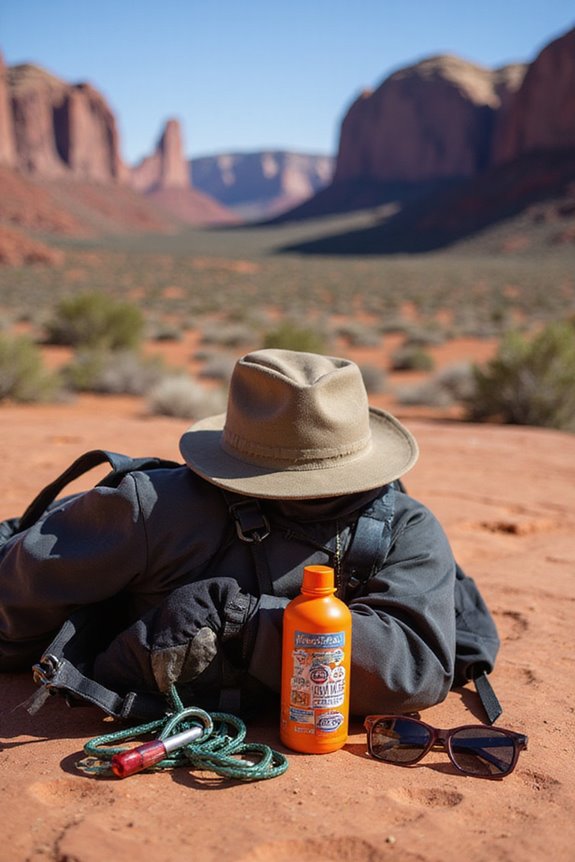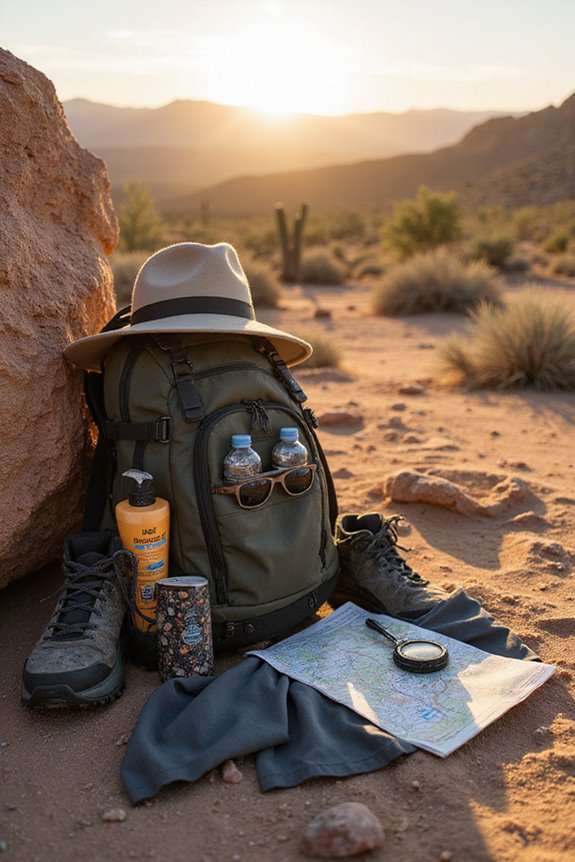When we hit the trails, sun protection is a must! Let’s start with sunscreen—apply it 15 minutes before exposure, and don’t skimp! A shot glass full keeps us covered. Remember to reapply every two hours, especially after sweating. We can also rock UPF 50+ shirts and wide-brimmed hats. Timing matters too; try outdoor fun before 10 a.m. or after 3 p.m. to dodge those harsh rays. Stick around, and we’ll share even more tips to keep you safe in the sun!
Key Takeaways
- Apply a broad-spectrum sunscreen of at least SPF 30 at least 15 minutes before sun exposure and reapply every two hours.
- Wear protective clothing made of UPF 50+ fabrics, including long-sleeved shirts and wide-brimmed hats, for extra UV protection.
- Seek shade during peak sunlight hours, usually between 10 a.m. and 3 p.m., to minimize direct UV exposure.
- Use sunglasses that block 100% of UVA and UVB rays to protect your eyes from harmful sunlight.
- Monitor the UV Index to plan outdoor activities safely and avoid being outside during high UV times.
Proper Sunscreen Usage and Application
When it comes to proper sunscreen usage and application, we’ve got three golden rules to remember! First, we need to apply sunscreen at least 15 minutes before hitting the sun, allowing for proper sunscreen absorption. Envision the thrill of freedom on the trails, but we can’t forget the essentials like sunscreen!
Next, let’s not skimp—use a shot glass full for full-body coverage. It’s key to reapply every two hours, so setting reapplication reminders helps keep sunburn at bay, especially after sweating or swimming. Consider this: a sunny hike, laughter all around, yet we’re fully protected! For additional protection during outdoor activities, UPF 50+ shirts can block about 98% of harmful UVA and UVB radiation while keeping you cool and comfortable.
Choosing the Right Type of Sunscreen
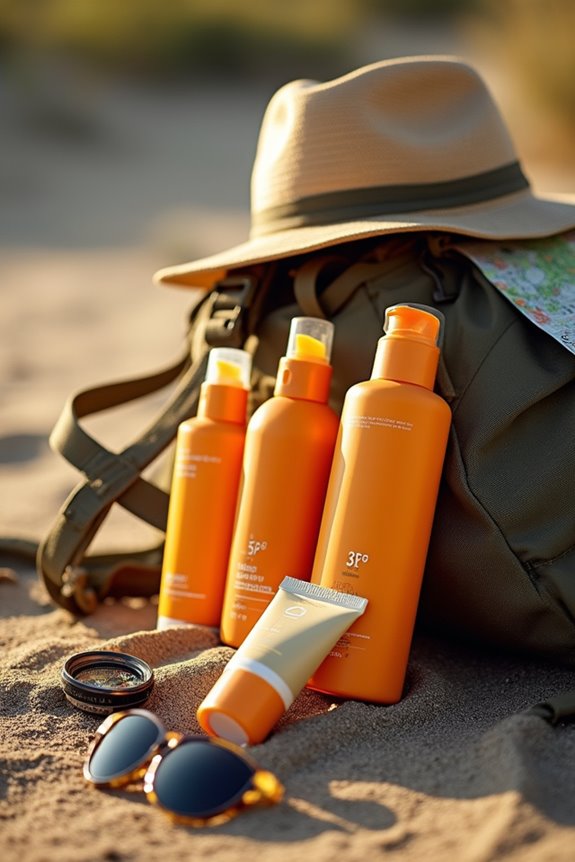
After we’ve nailed the basics of sunscreen application, let’s chat about choosing the right sunscreen for our adventures! We’ve got a couple of fantastic options: chemical and mineral. Chemical ingredients like avobenzone are lightweight and often come in sprays or lotions, perfect for those hot days when we’re sweating it out on the trail. On the flip side, mineral sunscreens, packed with zinc oxide, are gentle and ideal for our sensitive skin, plus they reflect UV rays like champs! For complete sun safety, consider pairing your sunscreen with UPF 50+ hats that provide maximum protection against harmful rays while keeping you stylish during outdoor activities.
Effective Protective Clothing and Accessories
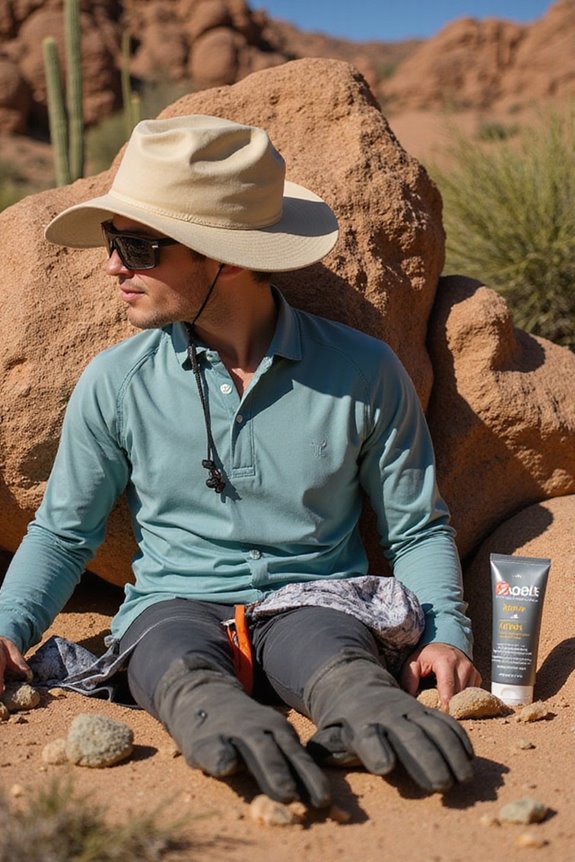
As we gear up for our sunny adventures, it’s essential to think about what we wear on those trails! Opting for UPF fabrics can be a game changer, blocking over 99% of harmful UVB rays while keeping us comfortable. Imagine hiking in lightweight, stylish gear that feels like our favorite athleisure!
Let’s not forget protective accessories like wide-brimmed hats that shade our faces and sunglasses blocking 100% of UVA and UVB rays. And sure, those long-sleeved shirts might feel a bit extra at first, but they’re worth it for that sweet, carefree freedom outside. For optimal sun protection, look for hiking hats with a minimum 3-inch wide brim that provides comprehensive coverage for your face, neck, and ears.
Shade and Timing Strategies for Outdoor Activities
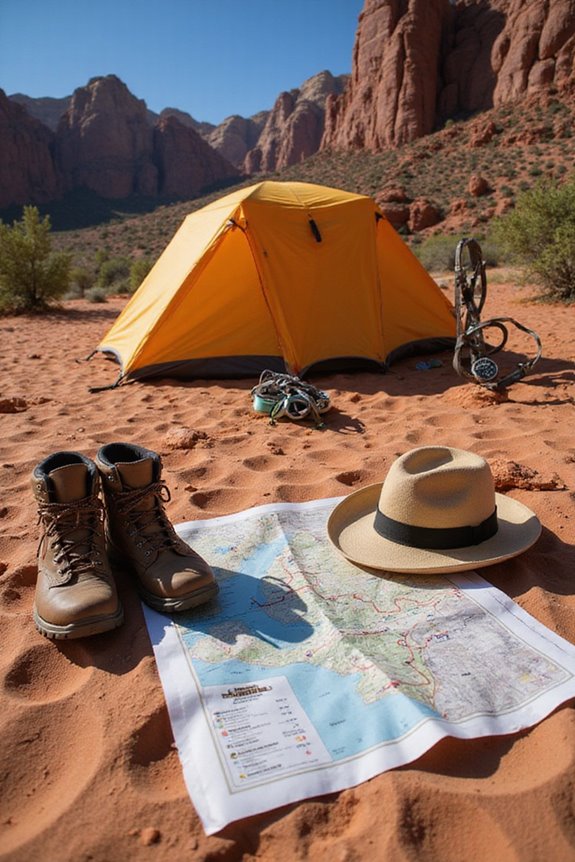
Planning our outdoor escapades requires keen timing and smart shade strategies to keep us safe from those sneaky UV rays. We should aim to embrace the morning sun before 10 a.m. or enjoy the softness of late afternoon light after 3 p.m. for lower UV exposure. We’ve got plenty of shade options! Whether it’s a friendly tree, a trusty umbrella, or a pop-up canopy, seeking shelter from direct sunlight is key.
Ever heard of the shadow rule? If our shadow’s shorter than we are, it’s time to find cover! And let’s not forget to check the UV Index to fine-tune our outdoor scheduling and dodge peak hours. Combining these strategies means we can explore freely while keeping our skin healthy! For maximum protection during unavoidable midday activities, consider wearing wide-brim hats that provide at least 3 inches of coverage around your face and neck.
Importance of Eye Protection From UV Rays
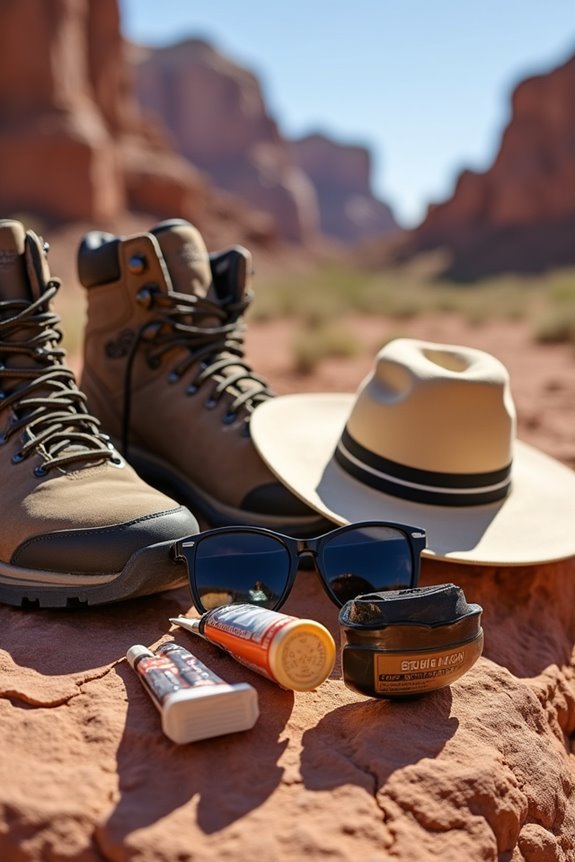
When we’re out soaking up the sun on our favorite trails, it’s easy to forget that our eyes need just as much care and protection as our skin. Prolonged exposure to UV rays can lead to serious issues like cataracts and even blindness. That’s where protective eyewear options come into play!
We should always grab our sunglasses that block 100% of UVA and UVB rays—don’t settle for anything less, folks! It’s essential to spread the word through UV awareness campaigns; the more we understand, the better we can protect ourselves. Plus, wearing a wide-brimmed hat adds another layer of defense. Just like choosing hiking gloves with adjustable cuffs for proper fit and warmth retention, selecting the right eye protection is crucial for outdoor activities. Let’s make eye protection a priority, ensuring we can keep enjoying those gorgeous views for years to come!
Frequently Asked Questions
How Can I Tell if My Sunscreen Is Expired?
To tell if our sunscreen’s expired, we should check for signs like texture changes, discoloration, or strange odors. Proper sunscreen storage in moderate temperatures helps maintain quality, so let’s keep an eye on these factors!
Can I Use Makeup With SPF Instead of Sunscreen?
While makeup with SPF offers some protection, we can’t rely on its effectiveness alone. The SPF comparison shows it’s not a substitute for sunscreen, so let’s embrace both for full sun safety and freedom in our routines.
What Should I Do if I Get Sunburned?
We’ve all felt that sting of sunburn, right? For sunburn relief, let’s cool our skin, hydrate, and apply soothing moisturizers. Together, we’ll support skin recovery and embrace the freedom of enjoying the sun responsibly.
Are Tanning Oils Safe to Use?
When it comes to tanning oils, we should be cautious. Many tanning oil ingredients lack adequate protection. Let’s prioritize sun safety tips, ensuring we’re covered with high SPF and broad spectrum protection for our skin’s health.
How Does Ozone Depletion Affect UV Exposure Levels?
Isn’t it ironic? As we enjoy our sunny days, the ozone layer thins, exposing us to harmful UV radiation. We should remember, more UV exposure means higher risks for our health and the environment.

